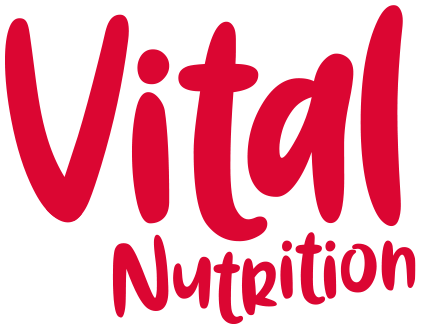5 ways to boost your fibre intake
Are you eating enough fibre? The chances are, probably not. An estimated 90% of us don’t get enough fibre in our diet. The minimum recommended daily intake is 30g a day and just four percent of women and 13 percent of men aged 19-64 are hitting that target. The average adult gets just 18g of fibre a day.
With the focus firmly trending on low fat and high protein foods, fibre can be the forgotten nutrient. If you have switched to a low carb diet, then you could be consuming even less than you used to.
The benefits of eating fibre-rich diet are well documented. This humble nutrient has been associated with supporting healthy digestion, balancing insulin and blood glucose levels, helping to support female hormone balance, maintaining a healthy heart and regulating our appetite. So whether your focus is on weight loss or health gain, it is worth taking a closer look at your fibre intake.
What is fibre?
Broadly speaking, there are two types of fibre - soluble and insoluble, and although neither can be broken down in our digestive tract, both have benefits for our health.
As its name suggests, soluble fibre dissolves in water, and can help you to feel fuller for longer, manage blood sugar balance and is thought to be important for cholesterol balance. Soluble fibre is found in beans, lentils, seeds, oats, pulses, fruit and vegetables.
Insoluble fibre is what used to be called ‘roughage’ and it helps prevent constipation by keeping digestion move along easily. This stuff is found in wholegrains, nuts, seeds, vegetables and the skin of fruit.
A fibre-rich diet helps to support the myriad of healthy bacteria that make up your gut microbiome, and this can help explain why fibre has benefits right across so many aspects of our health and wellbeing.
It is important to remember that increasing your fibre intake should be a slow and steady process, and that you may need to increase your water intake too. Too much, too quickly can cause cramps and belly ache, so start slowly. Make sure you get enough water for the gentle effects of soluble fibre to works its magic.
5 ways to get more fibre into your diet:
Choose low GI carbs - make the switch from white bread, white pasta and white rice to wholegrains instead. Wholegrains like oats, barley, brown rice, quinoa have a lot more fibre than their white equivalents. Take care with fibre-rich breakfast cereals though, as some fibre-rich choices like All-Bran and Branflakes are loaded with sugar - start your day with porridge or overnight oats instead.
Add some pulses to your soups, stews and autumn casseroles. Bulk out bolognese with puy lentils, add some chickpeas to your curry or add a scoop of lentils to homemade soups. For a saucepan, add a drizzle of olive oil, some lemon juice, chopped parsley and/or scallions. Mash together and season well. Delicious!
Eat the skin of fruit and vegetables when possible. Forget about peeling your carrots, sweet potatoes, parsnips and even kiwis. The skin is where you will get most fibre in fruit and veg, so eat the lot. Just give it a good scrub before you eat it.
Go nuts for seeds! Nuts and seeds have a lovely balance of both soluble and insoluble fibres, so get some of these into your diet every day. Try adding some milled flaxseed to your overnight oats or porridge, snack on an oatcake or chopped apple spread with nut butter, or keep nuts handy for when you need a little snack to keep you going.
Add an extra portion of vegetables to your plate. Try using mashed root veg as the topping for pies, roasting some seasonal brassica veggies like broccoli and kale, or bulking out one-pot dinners with a few extra vegetables.

